Traditional Czech food is some of the heartiest in European cooking. Meats are doused in rich, creamy sauces, soups and stews are simmered until they’re almost gravy-like, and every main dish is seemingly served with a hefty portion of knedliky, the ubiquitous Czech bread dumpling.
Dive into generous portions of Czech national favorites as soon as you arrive in Prague, Brno, or Ostrava. Start by ordering the classic Czech goulash, a steaming stew of slow-cooked beef and seasonal vegetables that are swimming in sauce and dripping in flavor.
Then try the creamy delights of svíčková na smetaně, a dish consisting of sirloin doused in a creamy sauce, before moving on to the chimney cakes (smothered in cinnamon and sugar, of course) for dessert. And this being Czechia, every meal is washed down with a foamy glass of unpasteurized local pilsner beer!
With so many wonderful traditional Czech dishes to choose from, you might not know where to start. That’s why we’ve compiled our list of the best Czech food for you. Order these delicious Czech dishes, and there’s no doubt you’ll have a satisfying time eating your way around this unique Central European nation!
Disclaimer: This post may contain affiliate links. If you make a purchase or booking through one of our links we may earn a small commission (don’t worry, it’s at no extra cost to you).
14 Traditional Czech Dishes to Try in Czechia
1. Savor the Heartiness of Czech Goulash
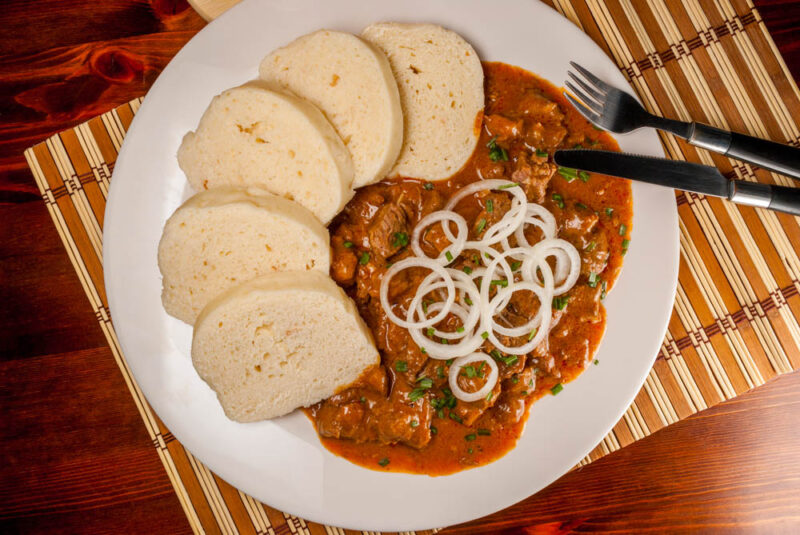
When you first land in Prague, we won’t be surprised if the first thing on your mind is the welcoming image of a steaming hot plate of goulash. Czech goulash is a delight to savor, and you’re guaranteed to love the sheer heartiness of this local favorite.
Goulash is a stew-like dish of slow-cooked beef that’s dripping in thick beef gravy and seasoned with a healthy sprinkling of paprika to spice things up. The beef is typically mixed with seasonal vegetables, and in Czechia, goulash is served with knedliky, a local type of bread dumpling that you’ll become well acquainted with during your trip.
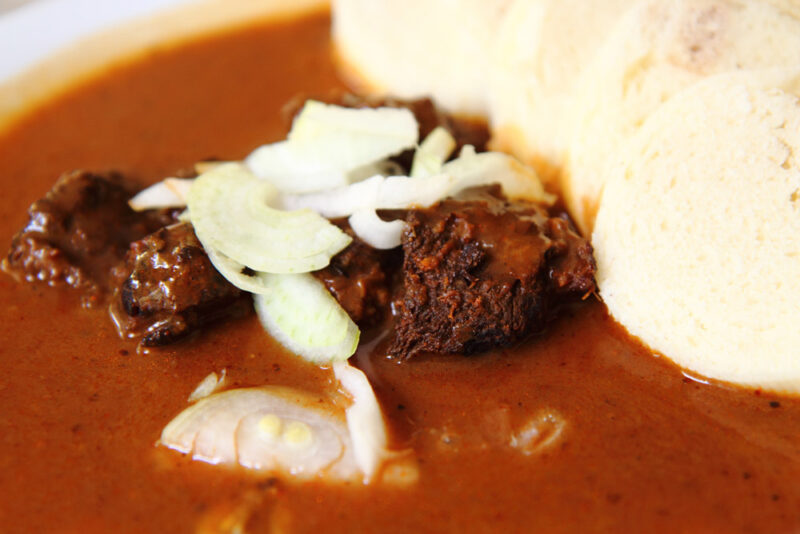
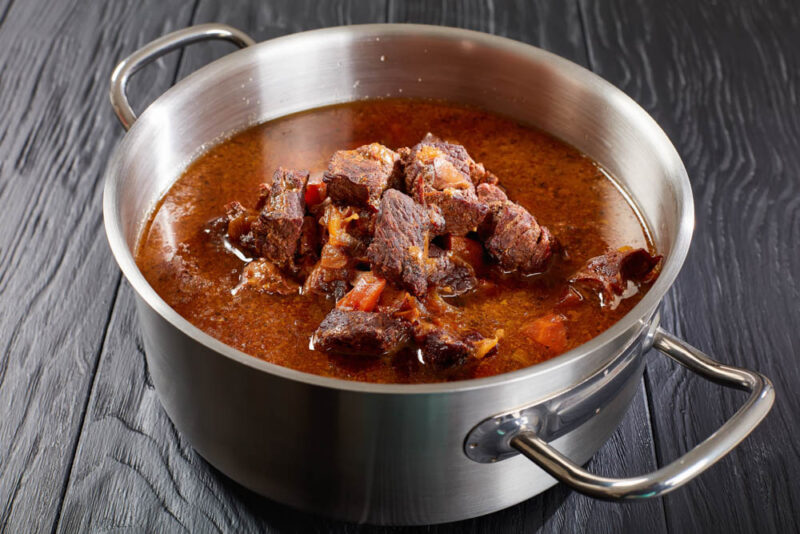
Okay, so the food historians out there will know that goulash isn’t technically a Czech dish. You’re right, goulash doesn’t originate here, but rather, it’s thought to have first been cooked in nearby Hungary. The Czechs, like many other Central European nations, just couldn’t resist adopting this thick beefy stew for themselves, and it’s safe to say that the local style of goulash is now a national dish.
The Czech style is often less spicy than the Hungarian version of goulash (which is drowning in paprika), and there are usually far fewer vegetables in the stew. Instead, the focus is primarily on beef.
Many cooks also choose to season the sauce with beer, making this a seriously hearty meal. You’ll find good goulash all over Czechia, where it’s particularly popular in the pubs. In Prague, book a table at U Červeného Páva or Havelska Koruna for authentic Czech goulash.
2. Fall in Love with Knedliky (Czech Bread Dumplings)
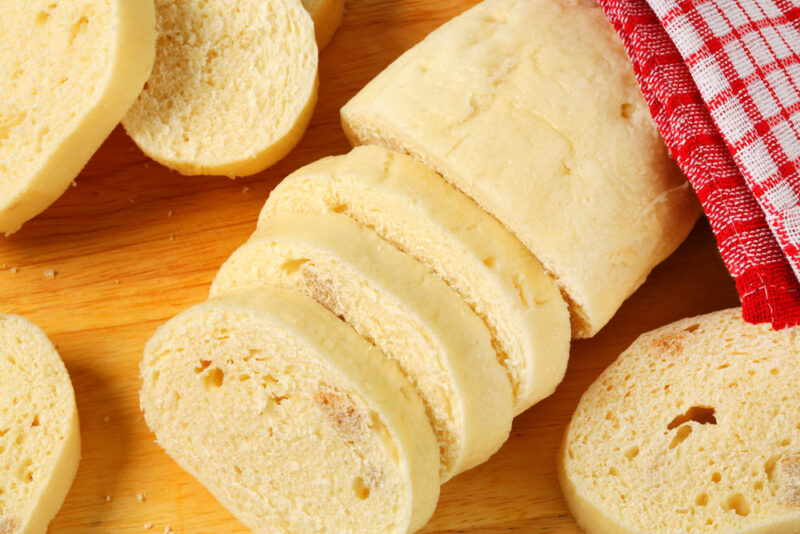
Prepare yourself for a supreme course of knedliky when you’re exploring Czechia because the locals love to serve this ubiquitous bread dumpling with anything they can. Knedliky adds a hearty touch to any meal, but you’ll come to love them just as much as the locals do.
Knedliky goes back a long way, and they’ve likely been prepared for as long as Czechs have known how to knead the dough that’s needed to cook them. Recipes might vary slightly from one cook and region to another, but the basic basis of knedliky is flour, eggs, yeast, milk, and salt. The ingredients are mixed together into a bread-like dough before being boiled in water and then sliced into manageable pieces.
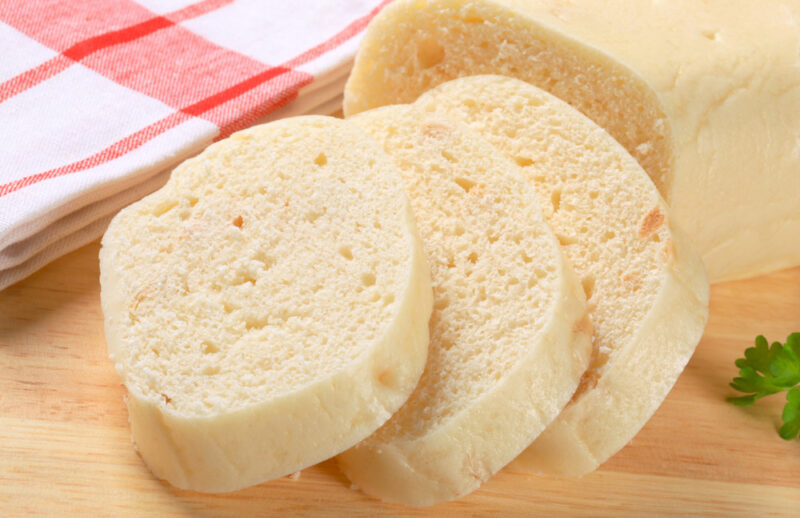
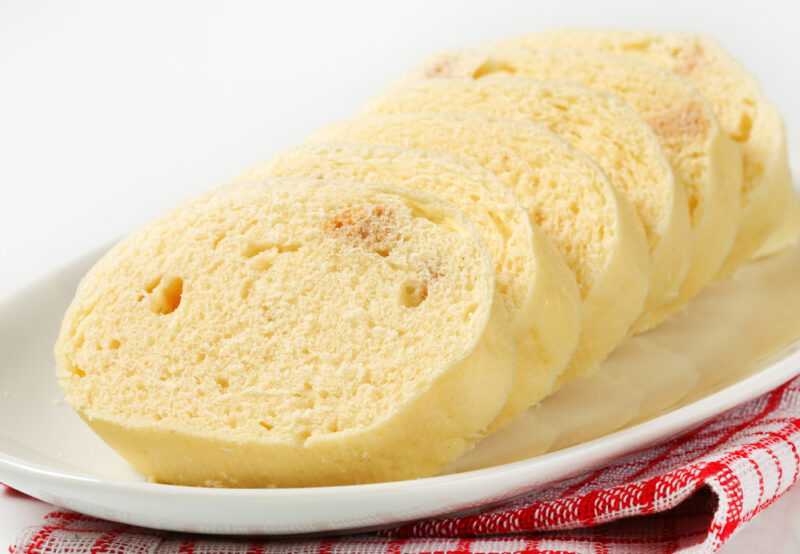
A popular variation of the basic recipe sees the dough mixed with potato for an even heartier potato-bread dumpling. Once sliced, knedliky is always served as a side dish, and you’ll commonly find it alongside goulash and other meat-based Czech dishes like pork knuckle or svíčková na smetaně. We don’t need to recommend a specific restaurant to try knedliky, as you’ll be served them alongside most mains you order across Czechia.
3. Embrace the Creamy Delights of Svíčková Na Smetaně
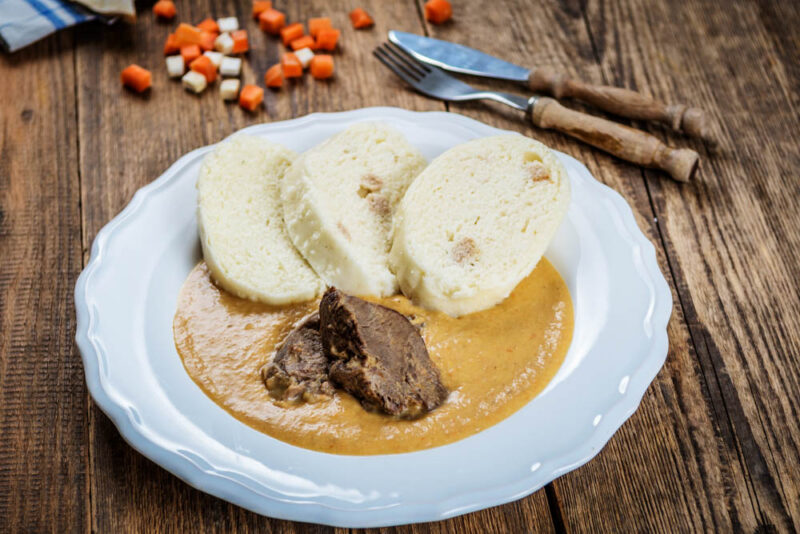
Czech food is rich and saucy, but no other dish speaks for this delightful combination of texture and flavor as does svíčková na smetaně. This fantastic dish consists of sirloin cuts of meat smothered in a thick layer of cream-based sauce, and it’s so beloved by Czechs that many consider this to be the nation’s true national dish.
The sirloin cut is generally of either braised beef or pork (the Czech word svíčková refers to this), while the cream sauce (na smetaně) is prepared using a mixture of carrots, onions, parsley, and spices (including black pepper and bay leaf) all blended together with sour cream. The dish is served alongside Czech staples like knedliky and often topped with a dollop of cranberries or extra sour cream.
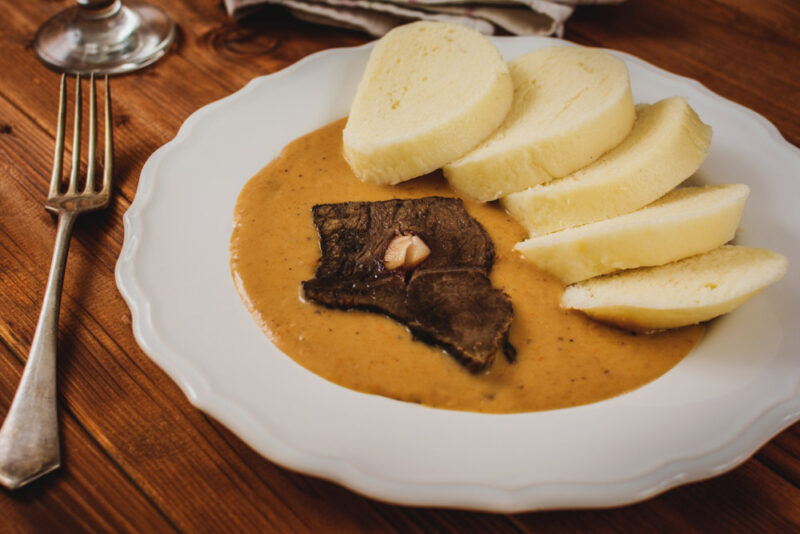
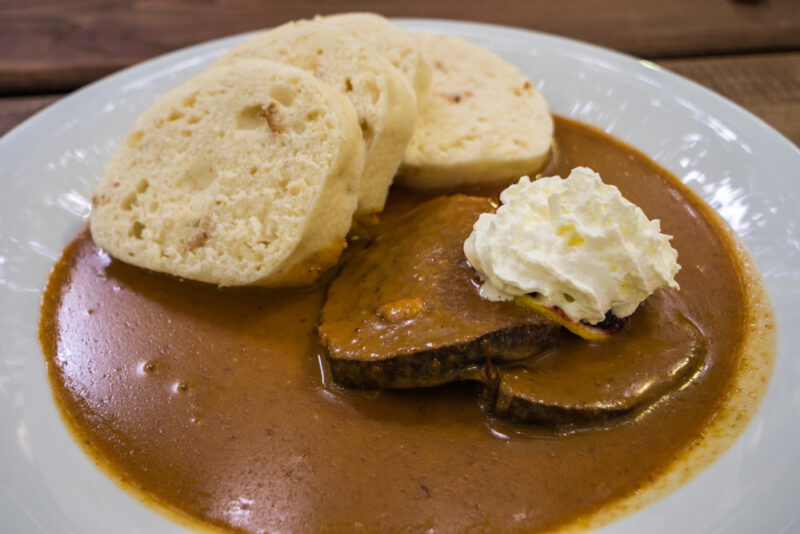
Svíčková na smetaně certainly doesn’t have the same level of PR among tourists that goulash does, but it’s a dish that you’re going to quickly embrace. One bite of braised beefsteak dripping in cream sauce, and you’ll be sold for a lifetime.
There are endless excellent restaurants serving svíčková na smetaně in Czechia, but as the national dish, you’d be hard-pressed to find better than in Prague. Terasa U Zlaté Studně, close to Prague Castle, is a romantic choice for Czech classics, while Cafe Imperial offers a nostalgic glimpse into the city’s art deco past.
4. Indulge in a Crispy Pork Knuckle (Vepřové Koleno)
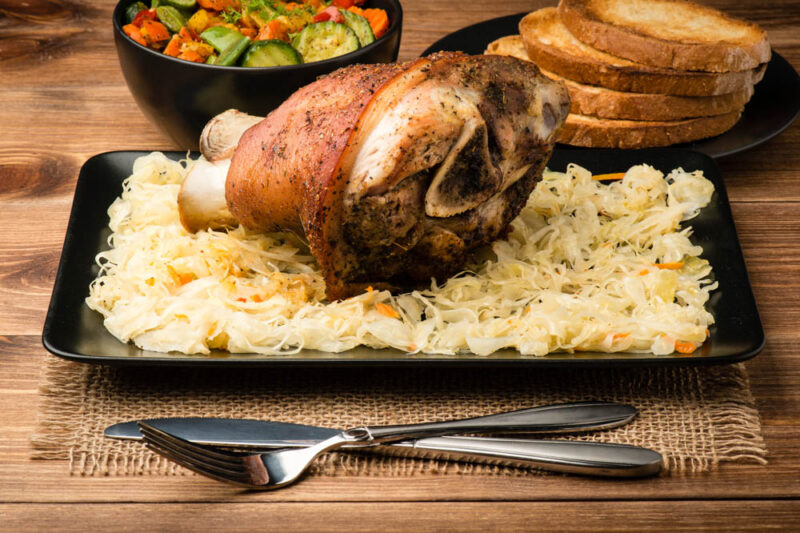
For meat eaters, one of Prague’s most saliva-inducing dishes is vepřové koleno, which is a long-standing favorite among beer guzzlers in the capital’s many pubs. Vepřové koleno is a crispy pork knuckle, and it’s at its best when the skin crackles in your mouth and the juice drips from the bone.
Traditionally, it’s thought that pork knuckles became popular due to the lower cost of the meat (the knuckle isn’t the best part of the pig), and it was often cooked as a family meal in homes around the country. The cook could simply throw the pork knuckle into the wood-burning oven, and leave it to slow cook throughout the day.
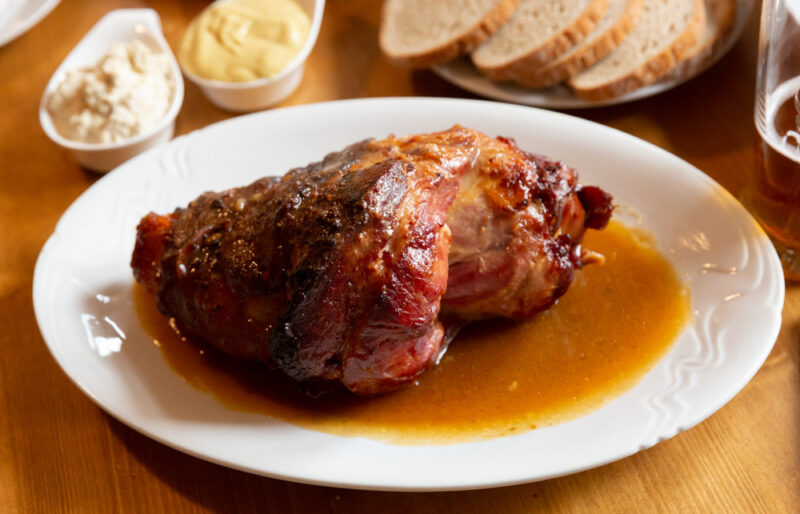
The same concept applies today, although the best pork knuckle is often marinated for hours or even days before cooking. Pubs typically marinate their cuts in local homebrewed beers to give it an even crispier, golden finish when it’s done. The slow-roasted pork knuckle will then be served with pickles and potatoes, leaving you with an enormous plate of food begging to be devoured.
Without a doubt, the best vepřové koleno is found in Prague, and the best place to try it in Prague is Pork’s, a dedicated pork knuckle restaurant with a hundred different pork options on the menu.
5. Enjoy Chlebičky, Open-Faced Sandwiches That Rival Scandinavia
One of the best Czech foods to try is chlebičky, a type of open-faced sandwich that’s covered in a huge variety of toppings. Move over Scandinavia because Czechia is where the real open-faced sandwich action is found!
Also known by the longer name obložené chlebíčky, which quite literally means “garnished breads,” these savory delights will sustain you on many a walking tour through Prague. The concept is simple, but the diversity is impressive as you’ll find these sandwiches are topped with everything from smoked sausage and cured hams to hard-boiled eggs and pickles (and often a combination of ingredients).
The bread, though, is quite specific, with the most popular choice being veka, a soft, local take on the French-style baguette. Chlebičky is often found for sale at street food markets in cities and towns across Czechia, while in Prague, a Scandi-inspired restaurant and bakery named Eska is an excellent choice for gourmet open-faced sandwiches.
6. Try Vepřo Knedlo Zelo, a Winning Combination of Pork, Dumplings, and Sauerkraut
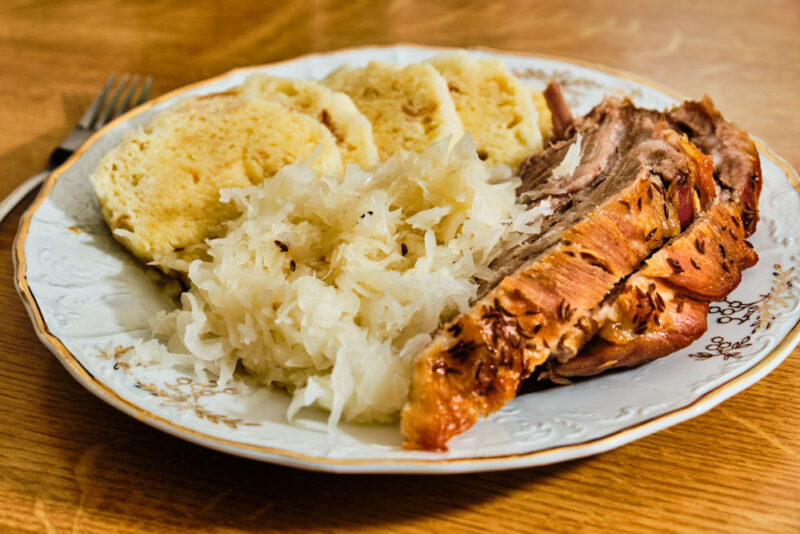
Roast pork, dumplings, and sauerkraut. What’s not to like about this filling combo of meats and vegetables? Czechs love it, and vepřo knedlo zelo (which literally translates as “roast pork, dumplings, and sauerkraut”) is a national culinary treasure.
This trio of delights works together beautifully to provide diners with a delicious plate of local delicacies that are quite simply the epitome of Czech cuisine. The pork is usually taken from the shoulder, and it’s slow-cooked to perfection after being seasoned with garlic and spices. The bread dumplings are the iconic knedliky, while the sauerkraut is braised with onions and, sometimes, bacon.
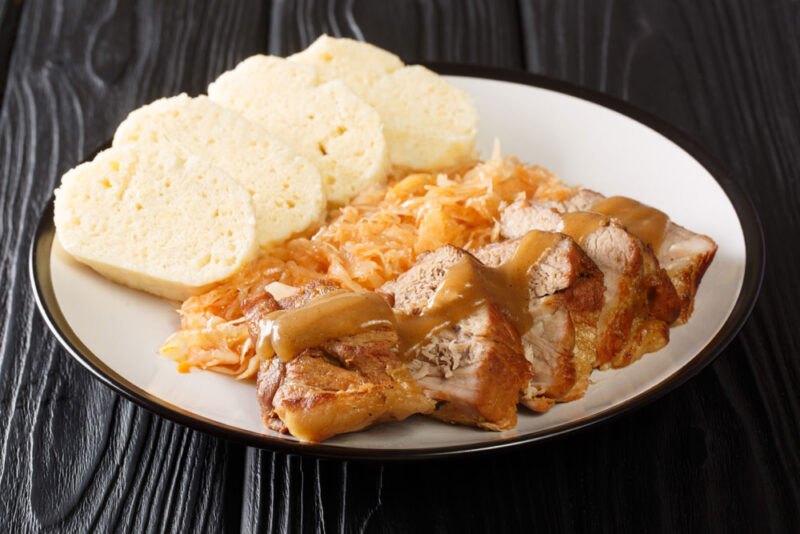
All three ingredients are served together, with a hefty ladle of pork gravy and juices poured over the top for good measure. Vepřo knedlo zelo is best served with a fourth accompaniment, a glass of unpasteurized Czech pilsner.
We recommend paying a visit to Lokal, a popular chain of Czech pubs serving great homebrewed beer and excellent food. You’ll find Lokal has several outlets in Prague, Brno, and other towns and cities in Czechia.
7. Dare Yourself to Try Tatarak, the Czech Take on French Steak Tartare
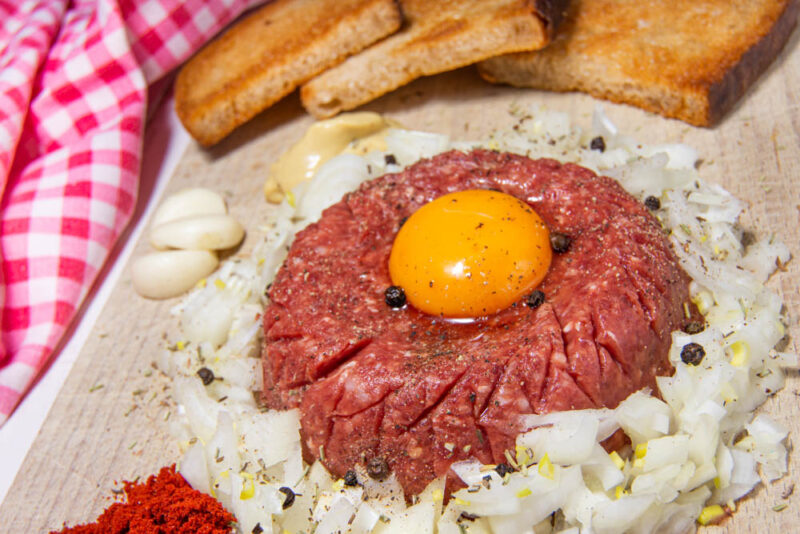
The French aren’t the only European nation with a penchant for raw beef. The Czechs have acquired a taste for steak tartare, too, although instead of wine, it’s best enjoyed here with a cold pilsner.
Tatarak is very similar to the French original from which the Czechs took their cue. Super fresh, raw mince beef is mixed with a number of different spices and condiments, including diced onions, mustard, and paprika. An egg yolk is cracked into the middle of the minced beef before the tartarak is immediately served at the table.
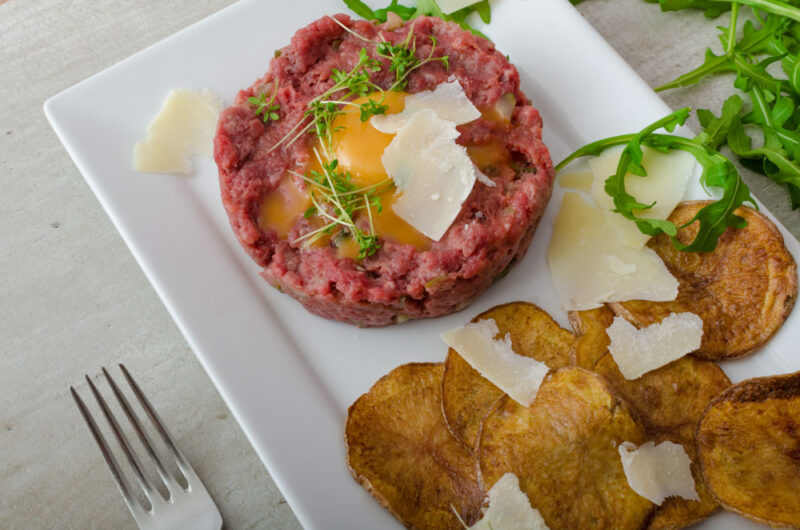
This was originally Czech high cuisine, and it was originally prepared in Prague for the capital’s urban elite. Now, tartarak is a Czech classic, and you’re just as likely to find it being served in a pub as you are in a fine-dining restaurant. In Prague, some great tartarak can be found at Nase Maso, Kantyna, and Na Kopci.
8. Delve into Moravian Cuisine with Moravský Vrabec
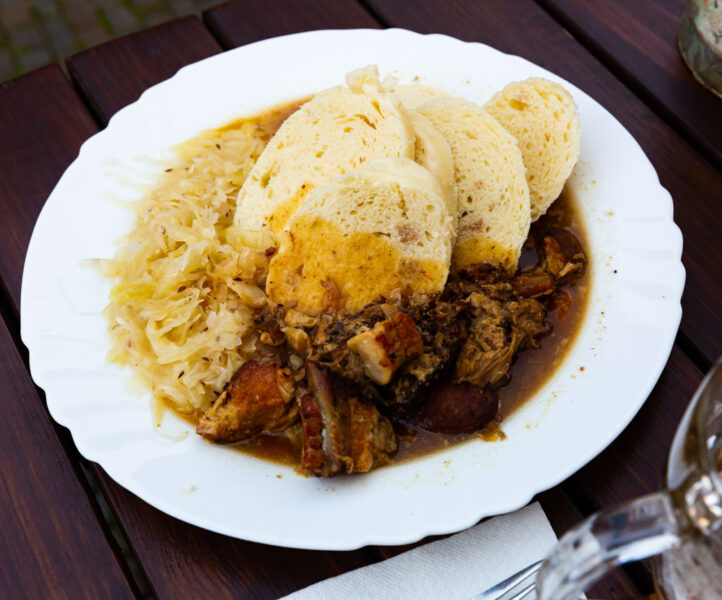
Don’t be fooled into thinking that the best traditional Czech dishes are only found in Prague because that’s just not the case. While the Czech capital is inevitably home to many of the nation’s best dishes and restaurants, there’s much competition to be found in the neighboring region of Moravia.
Moravian cuisine is distinct from the cuisine of Bohemia (where Prague is located), and one Moravian dish that’s gone national is Moravský vrabec. Translated, this means “Moravian sparrow,” but don’t worry, no birds were harmed in its making.
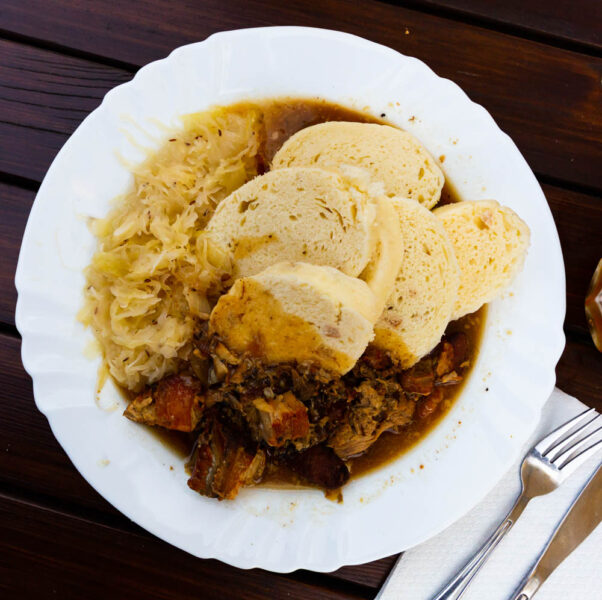
Rather, Moravský vrabec consists of pork shoulder served with potato dumplings and cabbage. The pork is seasoned with salt and cumin, then left to slow cook until it falls apart softly. The preferred choice of cabbage is typically red cabbage, which is served up like sauerkraut.
Head to Moravia for the best “Moravian sparrow.” In Brno, Moravia’s capital and Czechia’s second city, you’ll find traditional Moravský vrabec on the menu at Restaurace Špalíček, the city’s oldest restaurant.
9. Visit Moravia for a Taste of Sweet Valašský Frgál
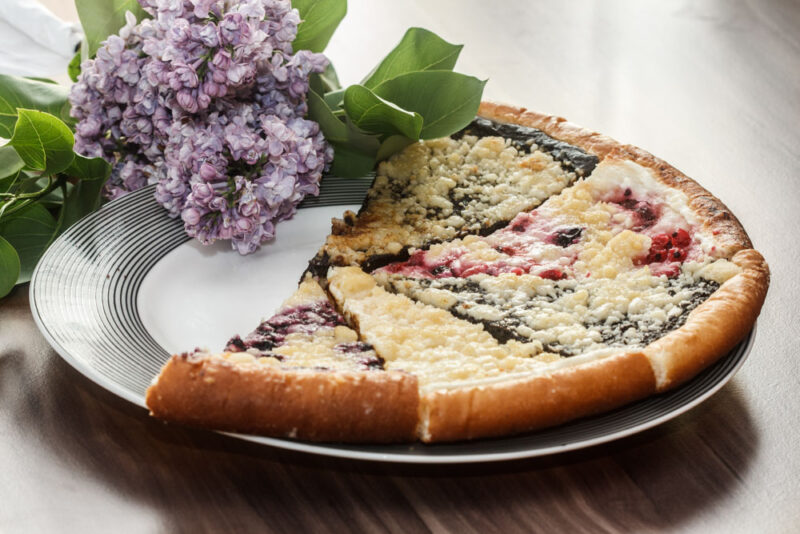
The Moravians sure do know how to cook, and if you have a sweet tooth, then you’ll find that this historical region is home to one of the best cakes in Czechia. Valašský frgál is a sweet cake from Wallachia (another historical region within Moravia that’s on the border with Slovakia), and it’s a big favorite on special occasions like Easter.
At first glance, valašský frgál looks more pizza-like than cake-like. Don’t be fooled, because while the cake certainly has the same shape and size as a standard 12-slice pizza, it’s prepared from a sweet cake-like dough that’s loaded with even sweeter toppings.
The dough itself is quite heavy, and being rich in fat, it takes a surprisingly long time to rise in the oven. The results are wonderful, though, with a deep golden brown color and a thick crust that only adds to the pizza-like look of the cake.
Toppings are very seasonal, with the cake being layered with different jams or fresh fruits, including things like pear and blueberries. Traditionally, whatever had been dried or preserved, or whatever could be picked from the bushes and trees, would find its way on top of a valašský frgál.
As this is a regional specialty, the best place to enjoy a slice of valašský frgál is in Moravia. You’ll find it for sale in cities like Brno, where it’s a popular item at the Cabbage Market. Top points if you travel even deeper in Moravia and head to the Wallachian region for the most authentic valašský frgál!
10. Enjoy the Guilty, Greasy Pleasure of a Bramborák (Czech Potato Pancakes)
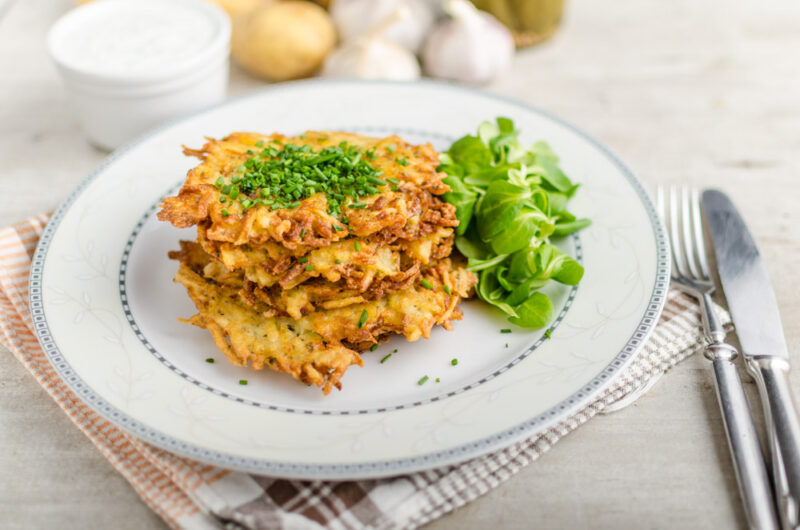
Sometimes you just need a guilty, greasy snack to savor, and in Czechia, nothing beats a good old bramborák when you’re craving a decadent snack. Bramborák is a Czech potato pancake, and you’ll find them for sale (usually dripping in grease and fat) at many of the country’s street food stalls and fast food vans.
Bramborák is prepared using a base of grated potato, which is bound together using a mixture of eggs and flour. The potato pancake mix is seasoned with garlic, marjoram, and other spices, before being fried (with lots of oil) in a pan. At street food stalls, the potato pancake might very well be deep-fried for extra crispiness.
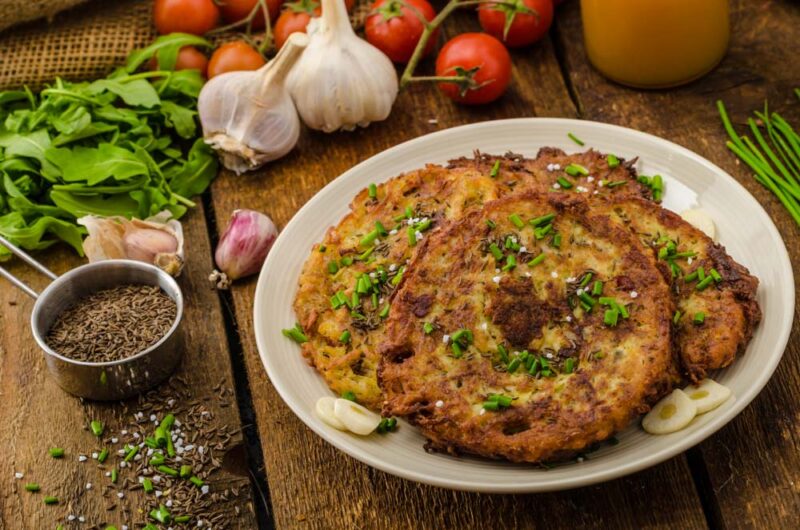
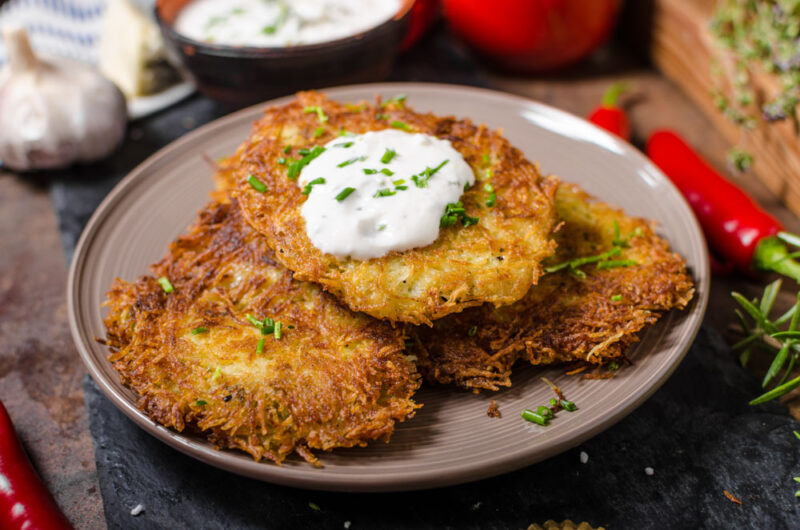
If you’d like to try a less greasy version of the bramborák, then you’ll also find that it’s a popular choice in restaurants, where the potato pancakes might be served with a little extra garnish in a fancier establishment (we think they go well with a dollop of sour cream and some cranberry sauce!).
11. Load Up On Sekaná Pečeně, Czechia’s Beloved Meatloaf
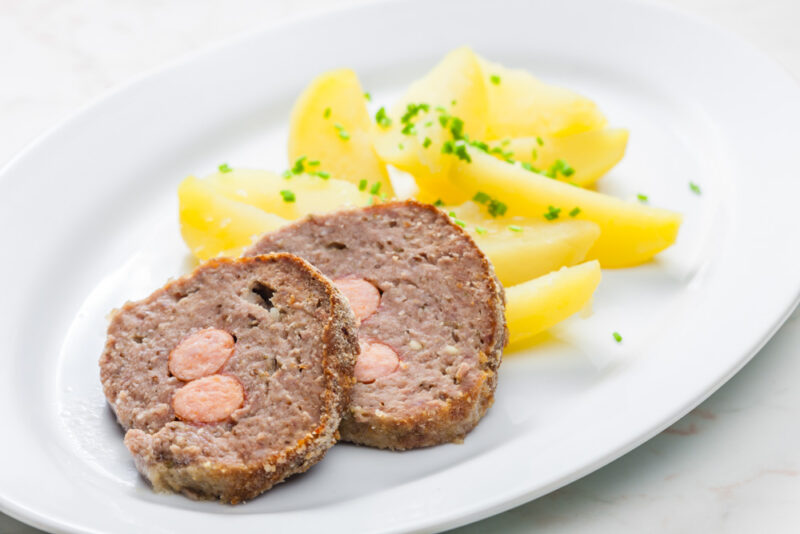
If you’re a meat-loving carnivore, then you’re in the right country. Czechs don’t do their meat dishes in half measures, and one of the best (read: meatiest) dishes out there is sekaná pečeně. For all intents and culinary purposes, sekaná pečeně is Czechia’s take on the classic meatloaf.
To prepare sekaná pečeně, you’re going to need a hefty quantity of ground beef and pork. Traditional recipes call for a one-to-one mix of these two types of meat, so you know from the get-go that this is a meat-heavy affair. The ground meats are seasoned with traditional Czech spices, which might include the likes of marjoram, black pepper, and perhaps a dash of paprika.
The seasoned meat is then mixed with breadcrumbs and diced onions, with the meatloaf mix held together by egg yolks. It’s thoroughly well combined, then left to bake in the oven. Serve in slices, with your choice of Czech sides to accompany.
If that sounds too complicated to make, then we suggest visiting Nase Maso in Prague. The restaurant (which is also a butcher) is well known for its love of meatloaf, and they’ve even held competitions in the past searching for the best sekaná pečeně recipes out there.
12. Love the Sweet Toppings of a Traditional Chimney Cake
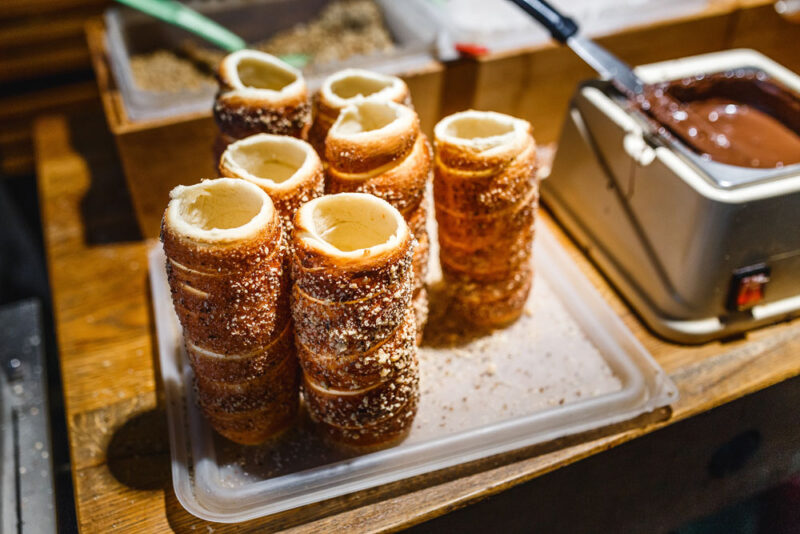
Few Czech foods can claim to be so iconic as the chimney cake (in Czech, the trdelník), and we’ll bet a potato dumpling that this sweet treat is already on your shopping list. Visit Prague’s Old Town, and you’ll see the famous chimney cakes baking over open fires. They’re sold everywhere, and the smell will follow you until you give in to your cravings and buy one!
The name comes from the cylindrical shape of this sweet cake, which is created by wrapping dough around a cylindrical spit. The dough is then slowly turned on the spit, allowing it to bake evenly all the way through. Once cooked, the baker slides the chimney cake off the spit and gets to work covering it in toppings.
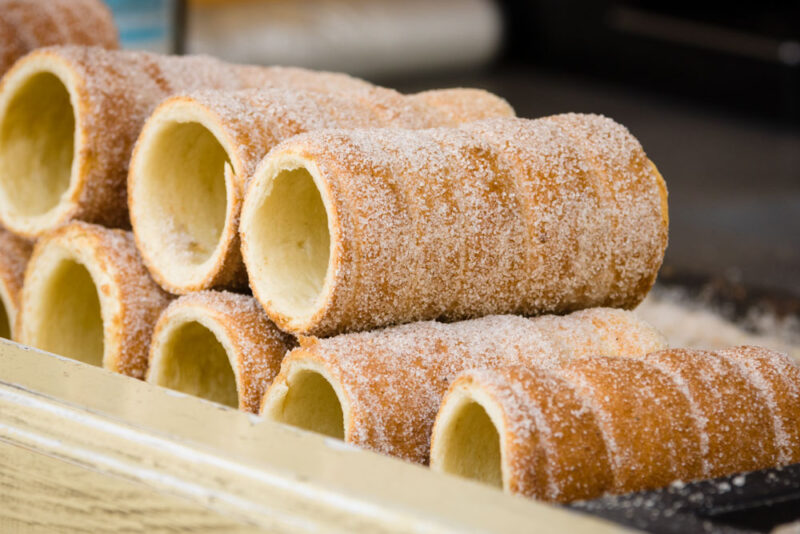
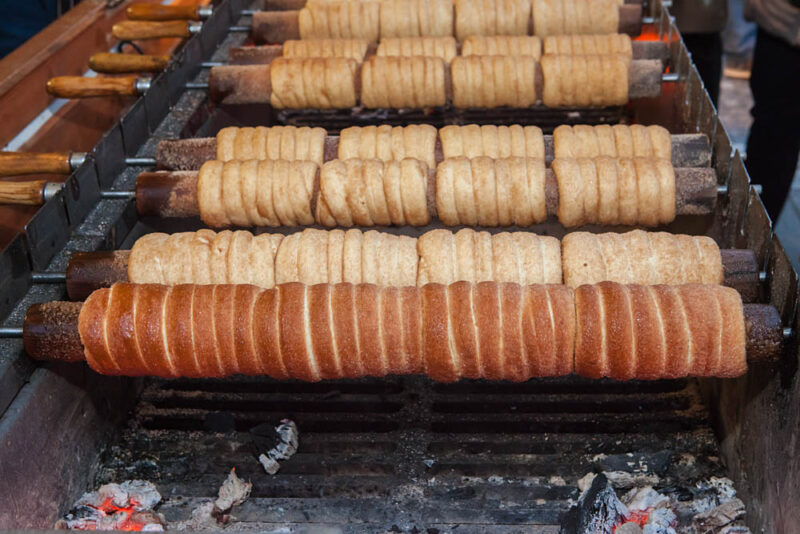
A simple chimney cake needs just sugar and cinnamon, but these days, the style is to outdo every other bakery in business. Toppings are becoming more lavish and extensive, and you can fill your chimney cake with everything from Nutella to whipped cream and sprinkles.
13. Cure a Hangover with a Bowl of Czech Garlic Soup (Česnečka)
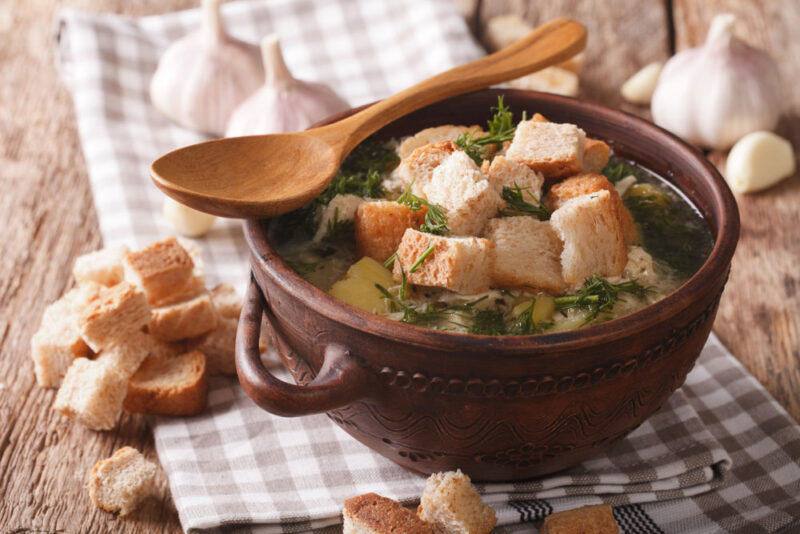
Czechs are one of the biggest beer-drinking populations in the world, so we wouldn’t be surprised if, at some point in your trip, you end up with a hangover. Don’t fear the inevitable, though, because Czechs are also well-prepared with a suitable and tasty hangover cure.
And that hangover cure comes in the form of a super-garlicky soup called česnečka, which is capable of curing even the harshest of alcohol-induced ailments. The main ingredient for “Hangover Soup” is garlic, which science suggests has proven healing properties to it. This is pure comfort food, but it’s also one of the most traditional Czech foods you can try.
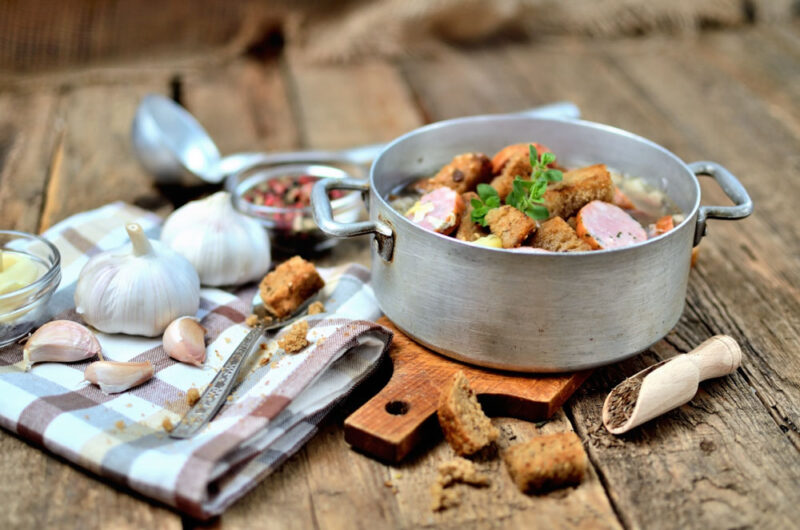
Česnečka is prepared using a watery base of stock (chicken is the traditional stock option, but vegetable stock is common these days, too). Into this broth goes several cloves of garlic, followed by diced onion and potatoes, before it’s spiced up with a little black pepper. It’s served simply, with a few croutons and a sprinkling of extra garlic and pepper, but it’s guaranteed to fortify you through the coming hangover.
Česnečka is the type of traditional food that’s best prepared at home. If you don’t have a Czech grandmother to cook you up a batch of their best garlic soup, though, then we recommend heading over to U Pravdu in Prague, where huge servings of česnečka are poured into thick bread bowls.
14. Drink a Pint or Two of Traditional Czech beer
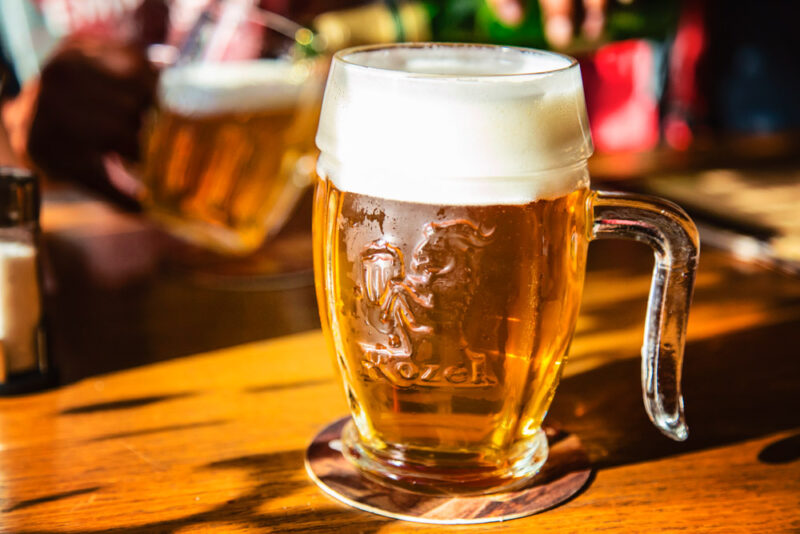
The Czechs officially drink more beer per person than anywhere else in the world. This means that beer lovers can rejoice because a huge part of your culinary experience is going to revolve around beer.
Czech brewing traditions go back a thousand years, and the beers are a little different from what you might be imagining. The traditional Czech pilsner is often served unpasteurized, fresh from the barrel, and it’s poured with an intentionally large quantity of foam at the top.
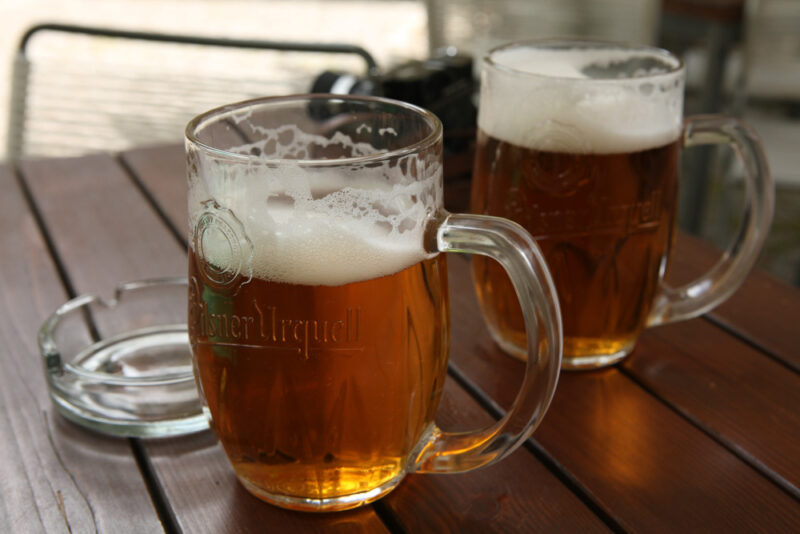
Beers come in all tastes, tones, and colors, with dark beers being as prevalent here as the lighter pilsners you might be expecting. Many restaurants and bars brew their own branded beer on-site (often at the bar in front of you), while major breweries are found in Prague (Staropramen) and Brno (Starobrno).
There you have it! The 14 best traditional Czech dishes to try on your next trip to Czechia. What’s your favorite Czech food?
Planning a trip to the Czech Republic? Check out our favorite books and travel guides!
SHARE THIS ON PINTEREST
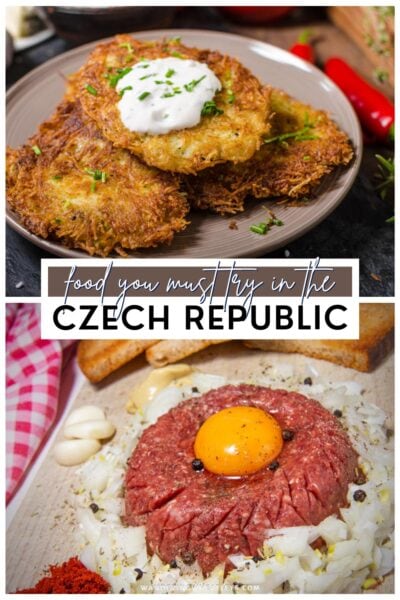
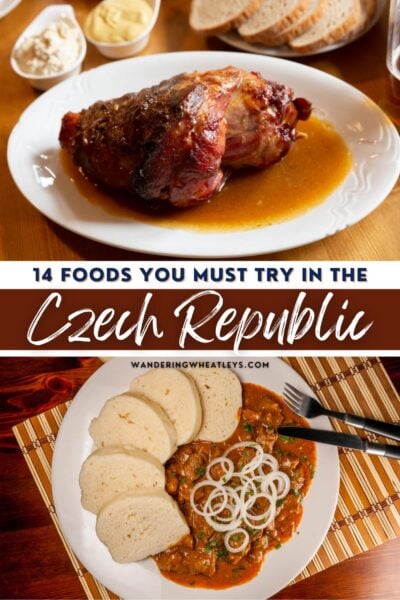
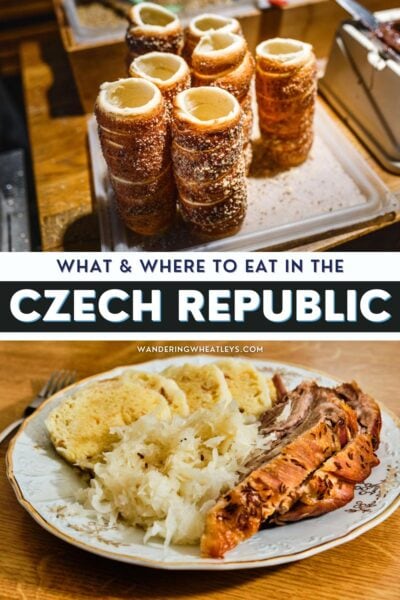

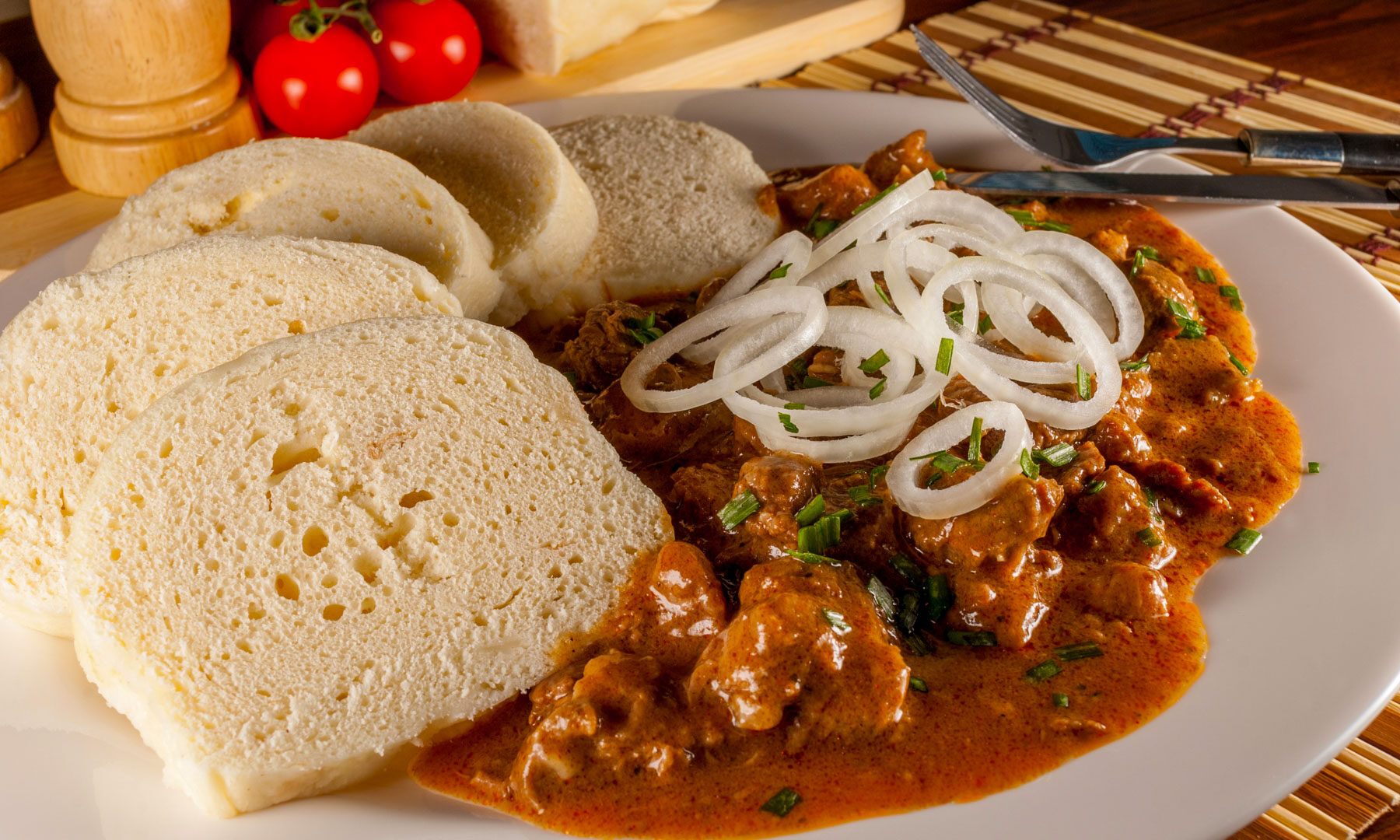





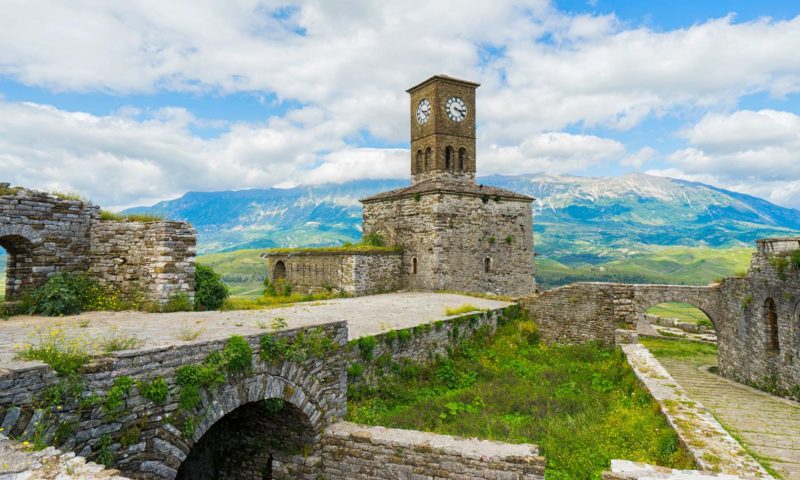


Despite being sold at the center of Prague, the chimney cake, also known as trdelník, actually originates more from Slovakia or Romania. Its presence in Prague is primarily driven by marketing rather than being a traditional Czech treat. If you’re seeking an authentic taste of Czech tradition, I recommend trying sweet rolls known as Hořické trubičky, round wafers called Karlovarské oplatky, or sweet dumplings. These treats embody the true essence of Czech culinary heritage.
Additionally, when it comes to main dishes, I highly recommend trying rabbit with spinach and dumplings. Dumplings, a staple in Czech cuisine, are commonly made from bread or potatoes (a texture similar to croquettes).
Czech cuisine, known for its hearty nature, heavily relies on soups and rich sauces. One guilty pleasure that many Czechs enjoy is breaded fried cheese, which is considered a gastronomic sin but a delightful indulgence nonetheless :).